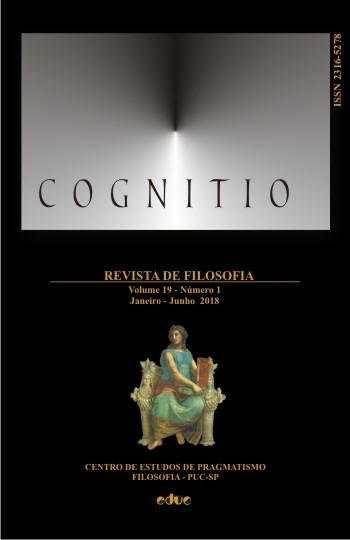Dewey’s Aesthetics and the History of Art: three examples from the Late Antiquity
DOI:
https://doi.org/10.23925/2316-5278.2018v19i1p35-55Keywords:
Aesthetics, Detour, Formal Analysis, History of art, Late antique art.Abstract
Although John Dewey’s aesthetics has been the subject of a great amount of studies conducted through very different approaches (philosophical, sociological and pedagogical among others) there is a lack of contributions capable of recognizing the connection between Dewey’s aesthetics and the history of art. In this article we analyze three works of art from the Late Antiquity (III-VI century a. C.) mainly following Dewey’s key concepts of detour and formal analysis, in order to reconstruct the aesthetic experience of the author, the beholder and the patron of each work of art. Our purpose is twofold. Firstly, we want to demonstrate that an approach based on Dewey’s theory is fruitful when it comes to studying ancient works of art. Secondly, we want to demonstrate that a pragmatist interpretation of late antique art is more fruitful and less reductionist than the traditional ones (Formalist, Orientalist, and Marxist).Downloads
Published
2018-09-06
How to Cite
Campeotto, F., & Viale, C. M. (2018). Dewey’s Aesthetics and the History of Art: three examples from the Late Antiquity. Cognitio: Revista De Filosofia, 19(1), 35–55. https://doi.org/10.23925/2316-5278.2018v19i1p35-55
Issue
Section
Cognitio Papers









